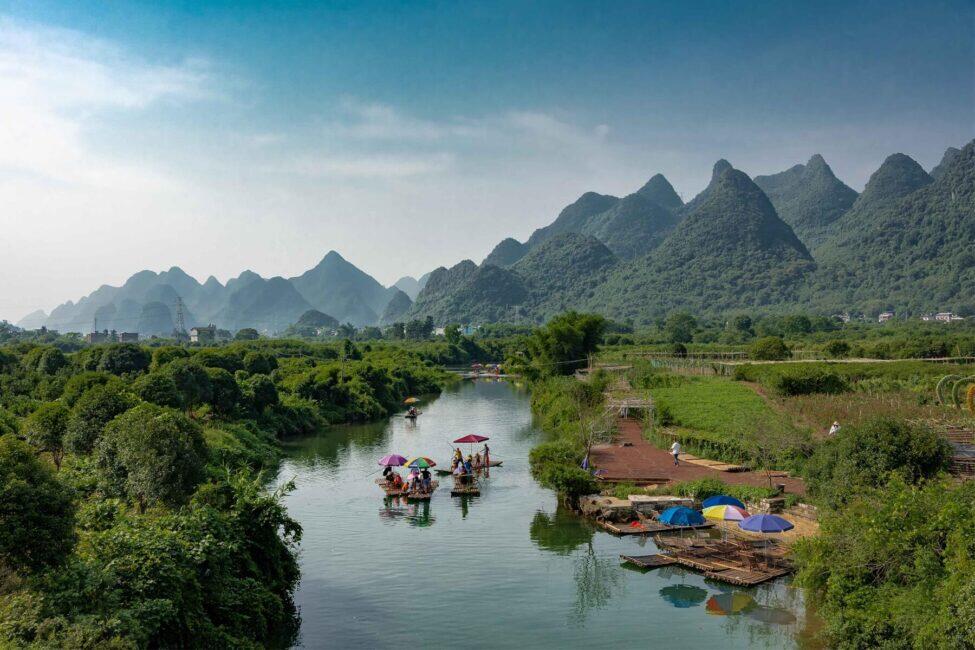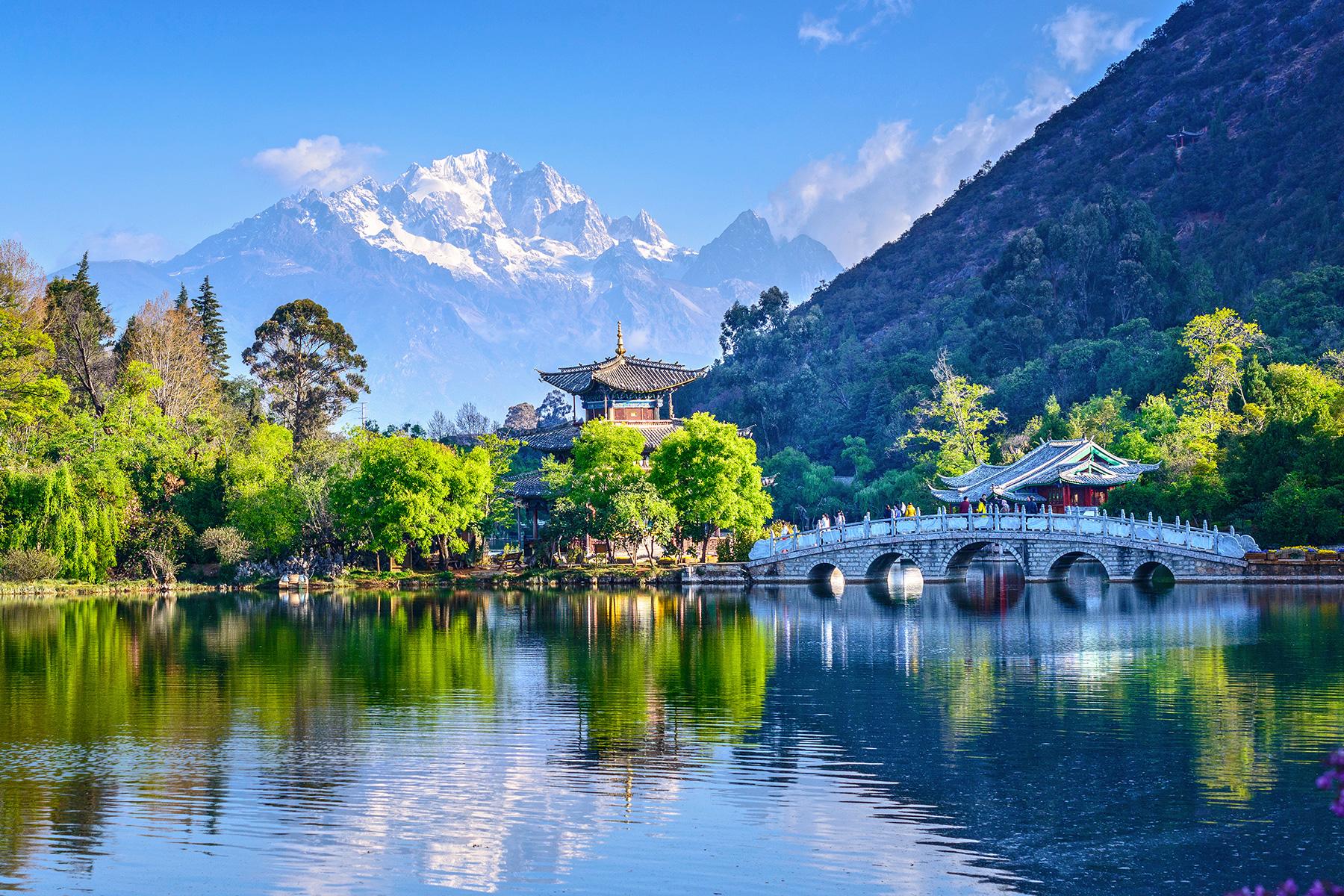Experience the myth for yourself.
In a distant place, there is a verdant valley tucked into the high steppes. Ribbons of morning light flood the valley once a red sun surmounts a jagged ridgeline. A broad expanse of crisp blue hovers above the mountain peaks like the comforting hand of God. Fruit is sweet, succulent and bountiful year-round. Cool, clear water is collected from streams running at the higher altitudes, reached by winding footpaths. A small community lives here in peace, tilling the land. Illness is a foreign thing to them; aging does not bring infirmity. Despite the vastness of the 21st century’s globalization, the valley has escaped it. It remains a place untouched by the unsavory appetites of man.
Myth-Making and Dreaming of Peace
Travelers and explorers throughout the centuries have sought out such utopias, despite the probability that they exist only in myth. Deep in dense Amazonian rainforests was supposedly a city of gold, El Dorado. Then, hidden the Himalayas was Shangri-La. Ancient historical texts record several mentions of an idyllic land—fertile, isolated places where natives lived in continual contentment. One text, Tale of the Peach Blossom Spring, penned in 421 CE tells the story of a fisherman’s chance discovery of a pastoral village where people lead an ideal existence. The fisherman, as the narrator, relays how the villager’s ancestors escaped to the place after the civil unrest of the turbulent Qin dynasty. Similarly, British author James Hilton wrote the novel Lost Horizon when World War I was still vivid in living memory; World War II loomed in the not-too-distant future.
Recommended Fodor’s Video

What’s in a Name?
It was Lost Horizon, and the subsequent Frank Capra film, which popularized the place name “Shangri-La” in the English-speaking world. Translated into Mandarin in the early 1990s; the book was an immediate hit. China at this time was in a period of feverish economic development and eager to move on from the social and political turmoil of preceding decades. The allure of a land that only knew peace held universal appeal—as well as marketing cache.
An official in a small Chinese town, close to the border of Burma, saw parallels between his home and the fictional paradise in the novel. The similarities must have been primarily geographic or topographic. While Hilton’s novel describes a secluded utopia, this town was far from it. Known as Zhongdian in Chinese and Gyalthang in Tibetan, it had prospered for centuries as a frontier town; its prime location put it at the nexus of trade between Tibetan and Chinese spheres. (A bustling trade town would be, in fact, the exact opposite of the mythical Shangri-La.) To add to the irony, after years of logging the local timber, Gyalthang faced a deforestation crisis which then caused a series of deadly landslides. Again, not quite Shangri-La-ish. Eager to identify a new source of income for the town, the official saw tourism as more sustainable.
Although many towns and counties in China’s southwest moved to rename their towns with the same hopes of boosting tourism, ultimately Zhongdian’s application was successful. It was renamed Shangri-La in 2001. Mainland travelers visiting the area doubled.

Not Quite the Myth, But Still Worth the Trip
While this Shangri-La is not likely to be the same place described in Tale of the Peach Blossom Spring or Lost Horizon, it does still hold a certain allure and is worth a visit while travelers are in Yunnan. Shangri-La is the heart of the Diqing Tibetan Autonomous Prefecture. This means that one can feel as if they are in Tibet, without having to enter the province of Tibet itself, which is notoriously difficult for foreigners. The majority of the local population is ethnic Tibetan, visitors can enjoy Tibetan food, and marvel at the gorgeous clothing and precious stones worn by men and women alike. Here is a selection of the best sites in Shangri-La.
Shangri-La is the heart of the Diqing Tibetan Autonomous Prefecture.
Ganden Sumtseling Monastery
This monastery was built by the 5th Dalai Lama, recognized as one of the greatest Dalais in Tibetan history. Partially destroyed during the Cultural Revolution at the hands of Red Guards, the structure has been fully restored. It is situated on a hillside outside the town center, next to a pristine lake. The building itself is often referred to a “Mini Potala Palace” as it has similar architectural elements, and is based on that famous lamasery. It provides a great venue for visitors to experience the allure of Tibetan Buddhism, without the bureaucratic and logistical hassle of traveling to Tibet proper.
Dukezong Ancient Town
A small town with over 1,300 years of history, it has been known for well-preserved Tibetan architecture. Unfortunately, a massive fire demolished a significant portion of the buildings in 2014, although new construction has stayed true to the former style. Meander along old cobblestone alleyways lined with wooden two-story buildings; architecture is the main draw here. Best to visit at night as it’s more picturesque and the low-key lighting makes for great photographs. There are numerous shops selling Tibetan goods like handheld prayer wheels, beaded jewelry, incense and the like.
Guishan Park and Guishan Temple
Pass through the old town to climb up steep steps to the hillside Guishan Park. It offers a panoramic view of the town, and has a towering golden prayer wheel. The prayer wheel is illuminated at night and a bit surreal. It requires several people pushing together to get it moving. Behind the prayer wheel is Guishan Temple with a giant, round-bellied Buddha; recordings of prayer chanting is played continually. Entrance is free and anyone can make an incense offering. Remember to walk around the Buddha clockwise, and to not double back.



